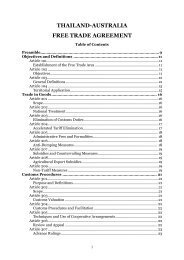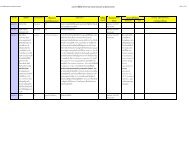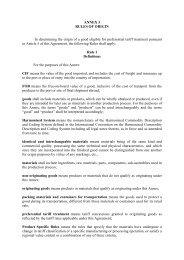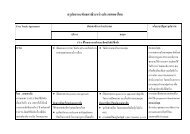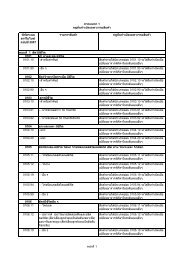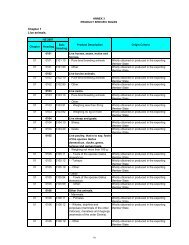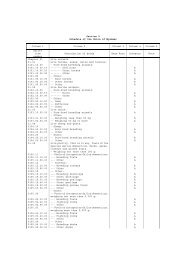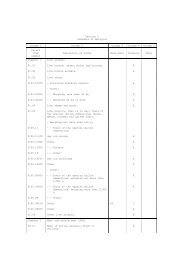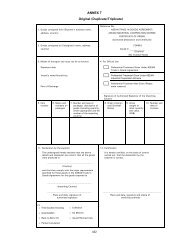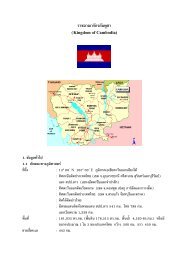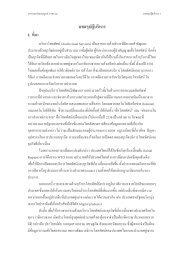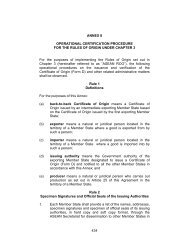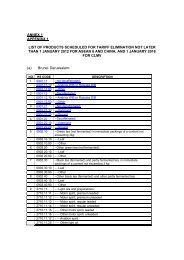International Standard Industrial Classification of All Economic ...
International Standard Industrial Classification of All Economic ...
International Standard Industrial Classification of All Economic ...
- No tags were found...
Create successful ePaper yourself
Turn your PDF publications into a flip-book with our unique Google optimized e-Paper software.
Introduction 19<br />
stituent establishments comprise the statistical units <strong>of</strong> the statistical structure. In<br />
delineating the statistical structure, functional or other groups in the organizational<br />
structure may be ignored and the constituent units regrouped to form the units <strong>of</strong> the<br />
statistical structure. For multi-establishment enterprises, the statistical structure may<br />
not coincide with the legal structure in which ownership <strong>of</strong> assets is registered.<br />
97. The source <strong>of</strong> information for production statistics and income statistics is<br />
<strong>of</strong>ten the management and cost accounts <strong>of</strong> businesses. These accounts record operating<br />
revenues earned from the sale <strong>of</strong> goods and services produced and the associated<br />
costs, wages and salaries, depreciation and operating pr<strong>of</strong>its. Countries that are more<br />
interested in the higher level <strong>of</strong> autonomy in the structure <strong>of</strong> enterprises than in the<br />
geographical location <strong>of</strong> the activity may prefer to delineate and use the kind-<strong>of</strong>-activity<br />
unit. On the other hand, if they are more interested in compiling comprehensive<br />
production statistics at a subnational level <strong>of</strong> geographic detail, then it will be necessary<br />
to delineate the smallest unit (a) that is as homogeneous as possible in terms <strong>of</strong><br />
activity and geography, and (b) for which statistics on revenues from the sale <strong>of</strong> goods<br />
and services, associated costs, value added and gross fixed capital formation undertaken<br />
can be compiled or estimated. This is the level at which the establishment (local<br />
kind-<strong>of</strong>-activity unit) is delineated as the statistical unit.<br />
98. Whenever the legal structure and the statistical construct based on production<br />
units do not coincide, statistical agencies will need to articulate the statistical<br />
structure and compile data with the help <strong>of</strong> surveys. The legal structure may consist<br />
<strong>of</strong> units created purely for tax purposes that are completely irrelevant to the producing<br />
units <strong>of</strong> the enterprise. However, if it is necessary to draw on tax records for the<br />
required data or if survey data need to be supplemented with tax data, statistical agencies<br />
will have to decide whether (a) they can find a way to map the legal and statistical<br />
structure <strong>of</strong> the enterprise, or (b) they prefer to use the legal structure selectively as a<br />
proxy for the statistical structure.<br />
99. The statistical structure delineates and identifies the units about which data<br />
are to be compiled. However, the data may have to be collected from higher- or lowerlevel<br />
units, which are then described as collection entities. As a result <strong>of</strong> globalization,<br />
some multinational global enterprises are keeping integrated accounting records at<br />
the global or the regional levels only; it may thus be increasingly difficult to separate<br />
and extract complete accounts for all the activities taking place within each domestic<br />
economy if such data are not obtained from the main or regional head <strong>of</strong>fice <strong>of</strong> the<br />
global enterprise.<br />
5. National differences in selecting statistical units<br />
100. An establishment undertakes an activity at or from a particular location.<br />
Thus, the concept <strong>of</strong> the establishment combines two dimensions—an activity dimension<br />
and a locality dimension. The concept is based on the assumption that the aim<br />
<strong>of</strong> the statistical programme is to compile data that is classified both by activity and<br />
by location, e.g., by geographical region. However, ISIC can be used to classify many<br />
other variables needed to analyse production and industrial performance. In examining<br />
the accounting and operating structures <strong>of</strong> enterprises, it is possible that producing<br />
units with differing levels <strong>of</strong> homogeneity with respect to activities and geographical<br />
precision will be found and that they may be suitable for the compilation <strong>of</strong> data on<br />
selected variables, such as number <strong>of</strong> persons employed; they may even be suitable for<br />
the compilation <strong>of</strong> production statistics if all the information needed with respect to<br />
meaningful operating pr<strong>of</strong>it is available.



